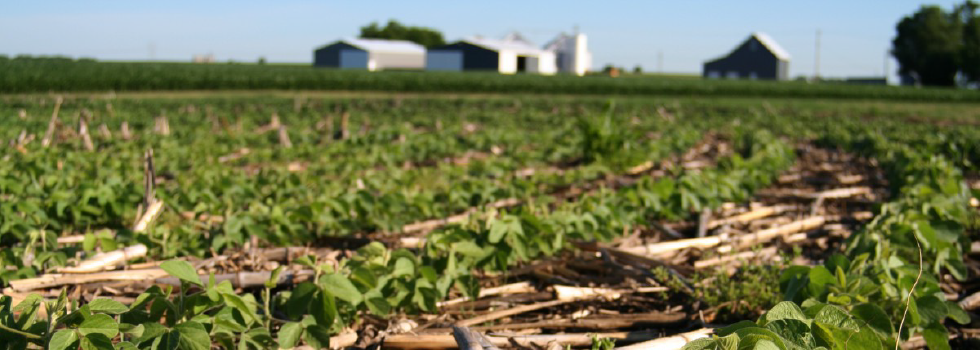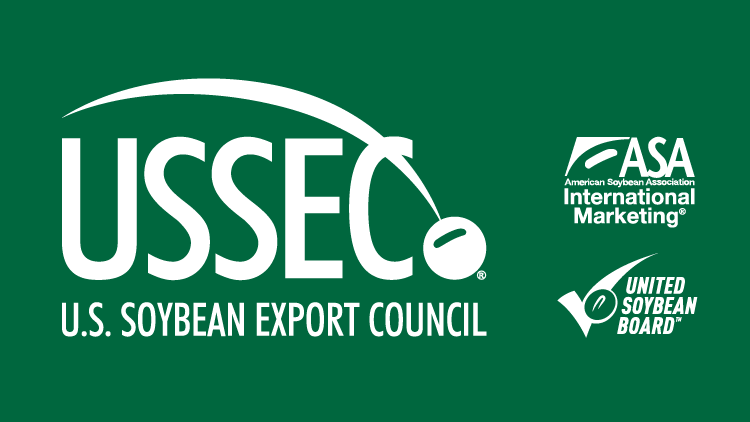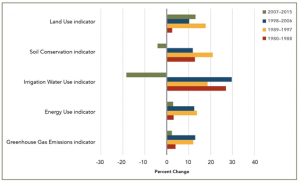Promotional Features
US soy comes from sustainable value chains for food security
The known combination of a growing world population and rising income levels yields a daunting perspective of food scarcity and increasing land use for agriculture production. Despite relevant efforts to reduce meat consumption, global demand for animal protein will increase. US soybean farmers are assuring that livestock fed with their feed ingredients connects to a value chain that minimizes emissions to protect the quality of water, soil and the environment.
In the 1930’s drought and over-farming led to erosion and soil exhaustion, also known as the Dust Bowl. Since then, starting in 1935, strict regulations have been in place by the US Department of Agriculture (USDA). Farmers voluntarily comply with these rules. Not only given the lessons learned in the past, but also because over 95% of US farms have been family owned for generations. Farmers understand that they didn’t inherit their land from their ancestors, but borrow it from their children. They understand the importance of sustainable farming to preserve a valuable resource such as biodiversity, and to support the interests of future generations. Sustainable practices they use are:
Reduced tillage: on 70% of all hectares used to grow soybeans, conservation tillage practices, including no-till, are in place. Some farmers haven’t tilled since the mid 1990’s and some use cover crops like turnips that are left to decay in the soil. This type of practices allows carbon to build up, increase organic matter in soil and improve water drainage and availability for crops.
Crop rotation: 94% of soybean hectares are under continuously rotated plantings. Soy is primarily alternated with corn and wheat and – in the South – sometimes with cotton. In the southern US just before the winter, wheat is also being sowed in land used for soybean production which enables farmers to double crop in one year. Crop rotation contributes to biodiversity and a healthy soil with sufficient nutrient levels.
Water management: only 8% of US farmland is irrigated for soybean production. Soybean farmers support the creation of watersheds and other water conservation efforts to ensure effective and equitable allocation of water resources.
Conservation: some 10% of US farmland is left out of production in order to protect sensitive areas. A major component of unused farm land is the Conservation Reserve Program (CRP) lands of 10m hectares which are comprised of riparian buffers, field-edge filter strips, grassed waterways, pollinator havens and lands designed for wetland restoration.
SSAP: a guideline to responsible farming
Created in 2013, the Sustainable Soybean Assurance Protocol (SSAP) is a guideline to responsible farming which is regularly updated. Designed for over 300,000 US soybean farmers, SSAP is based on federal conservation laws to protect wetlands, forests, grasslands, wildlife and habitat. It is coordinated by the US Department of Agriculture (USDA), and it represents a quantifiable, results-driven and audited approach geared towards continuous improvement. In return for incentives like reduced rates for crop insurance and technical assistance, over 95% of US farmers participate in USDA’s Farm Program. Approximately, 20,000 farms are audited each year by the USDA to ensure conservation compliance.
Like the Roundtable on Responsible Soy (RTRS), SSAP is positively benchmarked by the International Trade Centre (ITC) against the soy sourcing guidelines of the European Feed Manufacturers’ Organization (FEFAC). SSAP is however far less known in Europe, while many food processors, suppliers and retailers know RTRS.
A closer look at deforestation
The United States is recognized by the United Nation’s Food and Agriculture Organisation (FAO) as the world leader in preservation of public forestry lands. Between 1907 and 2012, total acreage of forested land remained stable and actually increased slightly.
The total acreage of crop land has been reduced in the U.S. between 1982 and 2015, while the forested area somewhat increased during the same period. 21 percent of forests in the U.S. are protected specifially for conservation biodiversity.
The topics covered in both SSAP and RTRS are mostly similar. The main difference between the two schemes is the approach. SSAP is rooted in US legislation, while RTRS is designed to support responsible soybean farming in several countries with different levels of technological and infrastructure development and various political and socio-economic climates. This however, does not mean that one scheme has a higher level of credibility than the other. Most relevant is the objective and here as well, similarity prevails. Both RTRS and SSAP address the relevant sustainability challenges in the sourcing countries and show their impact on these challenges and sustainable farming in general. Both via RTRS as SSAP, supply chain partners buying soy can prove to their customers and stakeholders that these problems are adequately addressed.
The impact of conservation farming in the US – supported by SSAP since 2013 – is reflected in long-term data from USDA between 1980 and 2015:
Visual: RTRS-SSAP brochure white part page 12-13
40% less land use to produce one ton of soybeans
47% less soil erosion
32% less water used for soy production
35% less energy used to produce one ton of soybeans
38% less greenhouse gas emissions
Field to Market states that soybean production in the US increased by 120% between 1980 and 2015, while planted area increased by only 22 percent, from 67m acres to 82m acres. The US-based alliance for sustainable agriculture breaks the 1980-2015 period down in four periods and reports interesting differences on the sustainability performance of US soybean production.
According to Field to Market, the decline of the Soil Conservation indicator reflects several factors, like the levelling off of adoption rates for conservation tillage and the reduction in land in CRP. The Alliance also reports a slight increase between 2005 and 2010 in acres where tillage was used as a weed management practice. This was a response to the increase in herbicide-resistant weeds. The Irrigation Water Use indicator was impacted by an increase of soybean acreage that was irrigated from 4% in 1980 to 9% in 2015. Field to Market observed an anomalously high value in 2012, due to a severe drought in the Midwest.
The Energy Use indicator improved (decreased) 35% between 1980 and 2015. Energy use for producing crop chemicals (embedded energy) and irrigation for soybeans have increased over time. These increases have been offset by decreases in energy used for tillage, as conservation tillage (reduced and no-till) increased to roughly 70% of soybean acres in 2015. This also explains the development of the Greenhouse Gas Emissions indicator.
Over the whole period between 1980 and 2015 Field to Market confirms the positive trend expressed by USDA data, but the fact that in recent years the performance of most indicators show a stabilizing or even decreasing performance underline the importance of structurally raising the bar in sustainable farming. Supported by SSAP, US soybean farmers are intrinsically motivated to continuously improve their performance in conservation farming.


